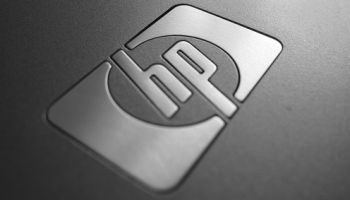HP is putting quad-core Itanium processors into a new blade server in the company’s high-end NonStop portfolio.
HP’s new Integrity NonStop BladeSystem NB54000c is powered by a quad-core chip from Intel’s Itanium 9300 “Tukwila” lineup, which was released in February 2010 after several delays. The new system will offer twice the performance of the current dual-core NonStop blade, according to Bob Kossler, director of strategy and planning for the NonStop Business Division of HP’s Business Critical Systems unit.
Assuring business uptime
 Along with the performance improvement, the new system offers a simple upgrade path, an important factor for customers that rely on their NonStop systems to keep their businesses running constantly, Kossler said.
Along with the performance improvement, the new system offers a simple upgrade path, an important factor for customers that rely on their NonStop systems to keep their businesses running constantly, Kossler said.
“It’s an in-cabinet upgrade,” he said in an interview with eWEEK. “There’s no application recompiling [needed]. … You put in the new processor, update the operating system and off you go.”
Blades are becoming an increasingly important part of the NonStop business for HP, Kossler said. They represent more than 50 percent of revenues the business brings in, and businesses are looking to them to bring the scalability and reliability the NonStop systems are known for, and doing so in a smaller footprint.
The scalability is a key part, he said. HP can scale a NonStop server cluster from two processors to 4,080 blades, according to Kossler.
He said the NonStop business is a steady one, with pockets of growth in such areas as financial services, health care and public agencies. Telecommunications companies also are a strong area for NonStops, particularly given the rapid growth of mobile data traffic and such applications as location-based services, Kossler said.
“Anywhere … a service licence demands the business stays up 24/7 with no downtime, that seems to be the sweet spot for NonStop,” he said.
Virtually pooled resourcing
 The NonStop systems also play in HP’s Converged Infrastructure push, given their ease of deployment and management and virtualisation capabilities that enable users to bring together their servers, storage and networking systems into a single pool of resources.
The NonStop systems also play in HP’s Converged Infrastructure push, given their ease of deployment and management and virtualisation capabilities that enable users to bring together their servers, storage and networking systems into a single pool of resources.
Still, the market for NonStops and their ilk remains relatively stagnant, as compared with the continued growth of x86 systems. In announcing its fiscal first-quarter financial numbers in February, HP said revenues in its Business Critical Systems was about $555 million (£341.6m), or roughly the same as the same period the year before.
Market research firm Gartner said in announcing its quarterly server market numbers that during the last three quarters of 2010, the Unix market, which includes HP’s high-end Itanium-based Integrity systems, was the one segment that showed signs of weakness, squeezed between the fast-growing x86 market and IBM’s strong System z mainframe business. For the quarter, the RISC segment saw revenues fall 18.7 percent, according to the analyst firm.
“The challenge for Unix vendors in 2011 is to limit migrations and to try to encourage new investment in these platforms,” Gartner analyst Adrian O’Connell said in a statement.
However, HP executives have said that the division of its industry-standard x86-based ProLiant servers and high-end Integrity systems gives it the best way to address all market segments. In addition, HP and its Integrity line are by far the top customers for Intel’s Itanium processors, which the chipmaker is continuing to evolve.
In February, Intel officials said the upcoming “Poulson” Itanium chip would feature a new microarchitecture that will be the foundation for the processor line for years to come. At the time, Intel executives declined to give a timeline for Poulson’s release, saying only that it was on schedule.





